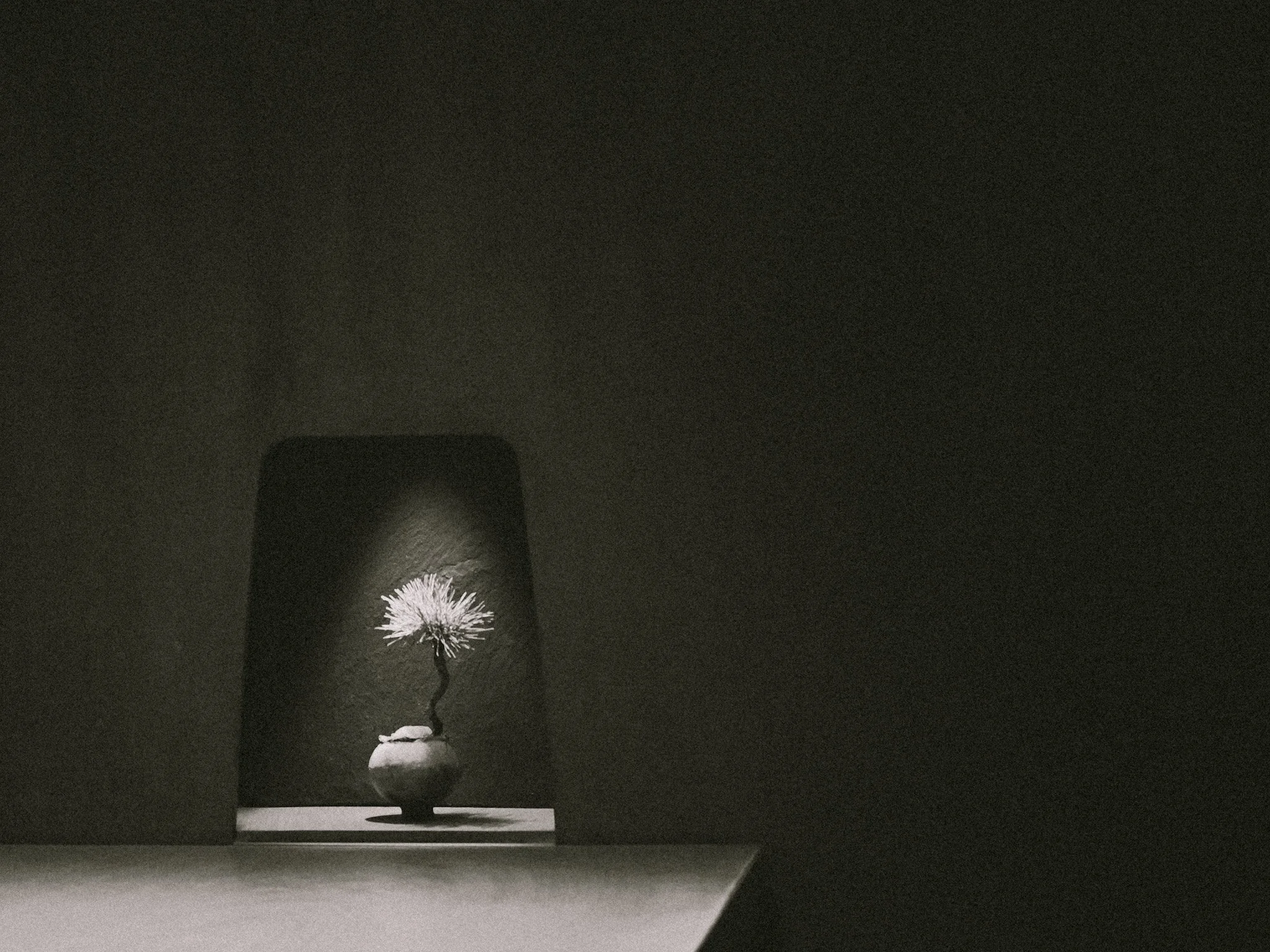A State of Ephemeral
In Praise of Shadows is a classic by Tanizaki, where the importance of shadows was discussed in relation to the appreciation of art and beauty. Take the example of the development of lacquerware with pitch black interiors that allow lightly coloured food such as miso, tofu, fishcake and plain rice to glimmer in the darkness, or the preference for flickering candlelight over the steady glare of a tungsten lightbulb. The Japanese pursuit of aesthetic through shadows certainly generates curiosity.
“Were it not for shadows, there would be no beauty.”
JUN'ICHIRO TANIZAKI
The Japanese concept of beauty and aesthetics has its roots in various eastern philosophies such as Confucianism, Taoism and Buddhism. Upon further observation, one will discover that majority of these philosophies have a dialectical worldview. Rather than being definitive in their thoughts or views, abstract answers that escape certainty and encourage further contemplation, are usually the norm. Such an outlook is built on the belief that everything around us is filled with opposites, which rather than being contradictory, can both be true at the same time. Beauty therefore shares the same sentiments of being undefinable, often abstract and open-ended, in the east. It is thus not surprising that shadow — being neither light nor darkness, piques great interest as a subject of beauty.
Light reveals, darkness blinds and shadows hide. Concealed between light and darkness, shadow is where the beauty of light and darkness presents. Without shadow, light would be light and darkness would be darkness. Shadow distinguishes light from darkness. It is neither light nor darkness, but is the reason for the existence of both. It is the point of differentiation that allows the beauty of light and darkness to be contemplated, debated and appreciated.
Light and darkness can be perceived and felt through the motion and contrast created by shadows. The beauty of light and darkness truly surface when shadows start to animate spaces — re-sculpting objects, disrupting stillness and occasionally mingling with other silhouettes. Spaces and objects temporarily escape their inanimate forms through shadows, appearing alive. The same can be observed in shadow puppetry where cut-out puppets come alive, using shadow as an expression. Liveliness is thus, one of the by-products of light and darkness, expressed through shadow. However, without its subjects, no light or darkness — let alone shadows will be observed, and no life would be felt…
READ THE FULL PIECE IN ABSTRACTS – ISSUE ONE: IMPERMANENCEText and images by ANATOMY OF THINGS

